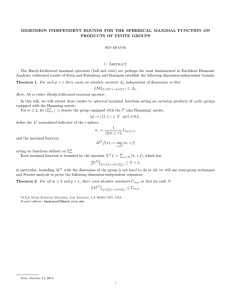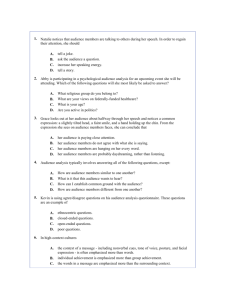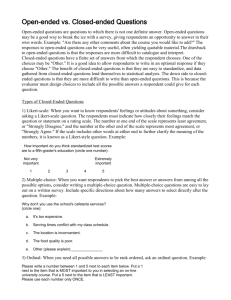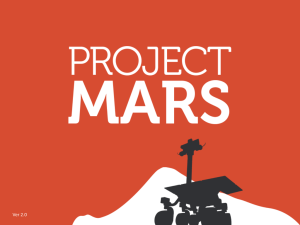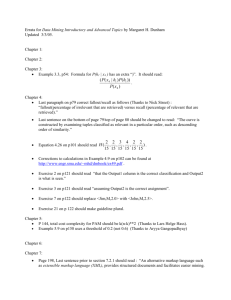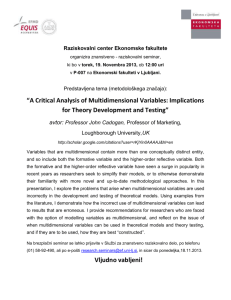Module 4: Test Preparation and Specification
advertisement
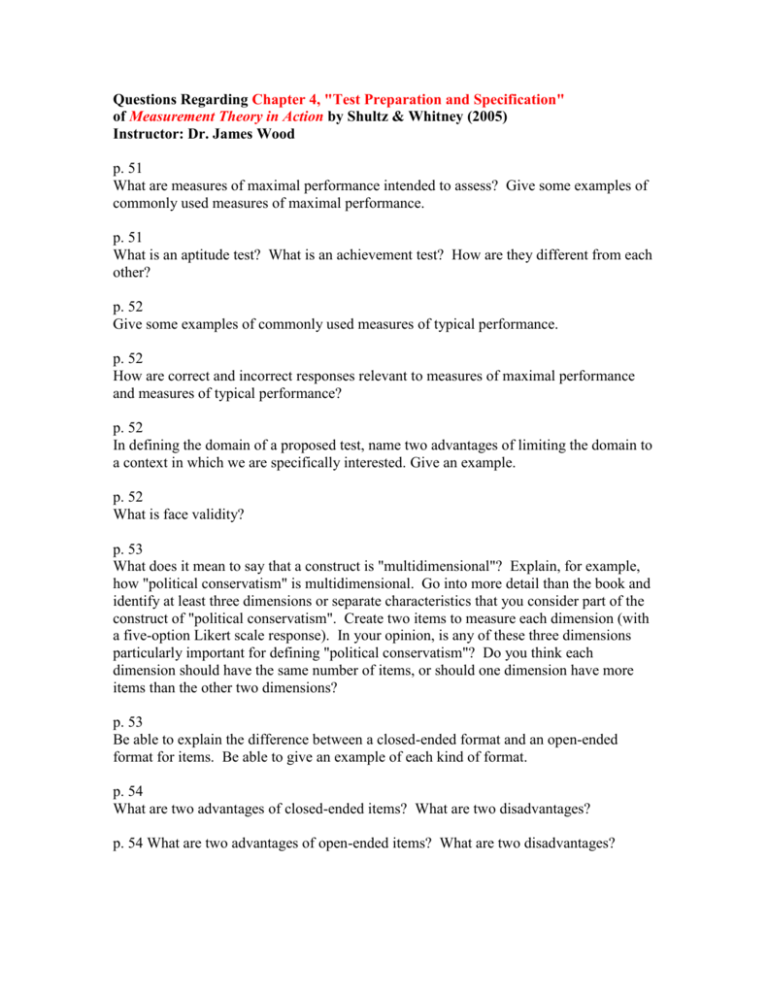
Questions Regarding Chapter 4, "Test Preparation and Specification" of Measurement Theory in Action by Shultz & Whitney (2005) Instructor: Dr. James Wood p. 51 What are measures of maximal performance intended to assess? Give some examples of commonly used measures of maximal performance. p. 51 What is an aptitude test? What is an achievement test? How are they different from each other? p. 52 Give some examples of commonly used measures of typical performance. p. 52 How are correct and incorrect responses relevant to measures of maximal performance and measures of typical performance? p. 52 In defining the domain of a proposed test, name two advantages of limiting the domain to a context in which we are specifically interested. Give an example. p. 52 What is face validity? p. 53 What does it mean to say that a construct is "multidimensional"? Explain, for example, how "political conservatism" is multidimensional. Go into more detail than the book and identify at least three dimensions or separate characteristics that you consider part of the construct of "political conservatism". Create two items to measure each dimension (with a five-option Likert scale response). In your opinion, is any of these three dimensions particularly important for defining "political conservatism"? Do you think each dimension should have the same number of items, or should one dimension have more items than the other two dimensions? p. 53 Be able to explain the difference between a closed-ended format and an open-ended format for items. Be able to give an example of each kind of format. p. 54 What are two advantages of closed-ended items? What are two disadvantages? p. 54 What are two advantages of open-ended items? What are two disadvantages? p. 54 Suppose a test developer has decided to used a closed-ended item format. Name three possible item formats that might be used (all of them closed-ended). p. 54 What are scale anchors? For example, what scale anchors might be used to measure frequency? What anchors might be used to measure evaluations? p. 55 Even though there are many advantages to including many items in a test, name three reasons why a lengthy exam may be undesirable or impractical. p. 55 In a test of maximal performance, how can item difficulty be determined? p. 55 Explain why readability is a concern with measures of typical performance. p. 56 Why do measures that claim to assess the same construct sometimes appear so vastly different from one another? p. 56. Some measures of a particular construct are better than others. Discuss what you believe to be the three most important issues that should be considered prior to item writing that may affect the quality of the final measure. p. 60 Exercise 4.1 Choose one of the constructs in the list for Exercise 4.1. Develop a clear definition that could serve as the first step toward the operationalization of the construct. Be sure to specify the (a) context and (b) dimensionality of the construct as well as its (c) relationship to and differentiation from, related constructs. Write at least 8 items to measure this construct. If the construct is multidimensional, be sure to write at least two items to measure each dimension.
